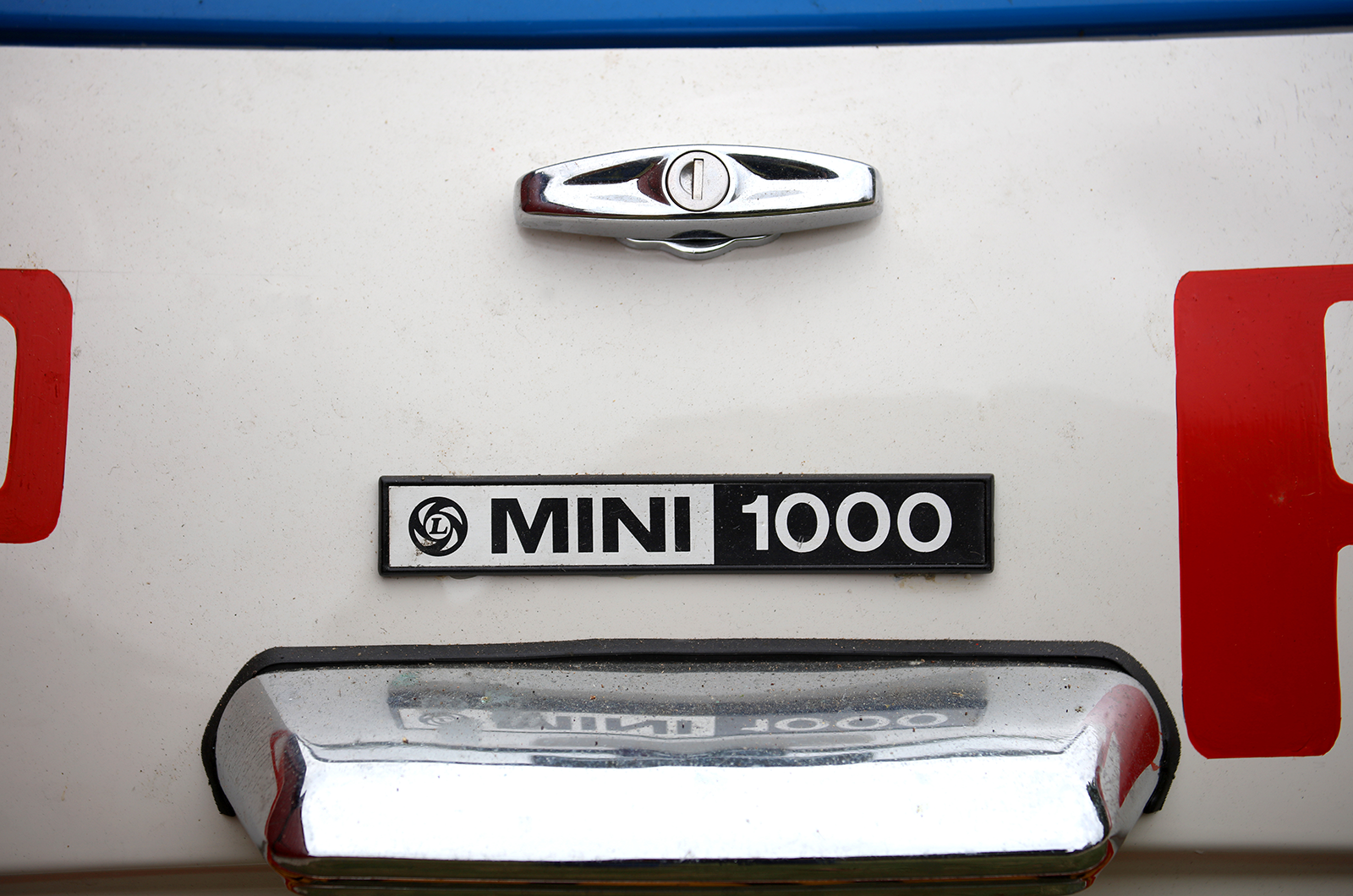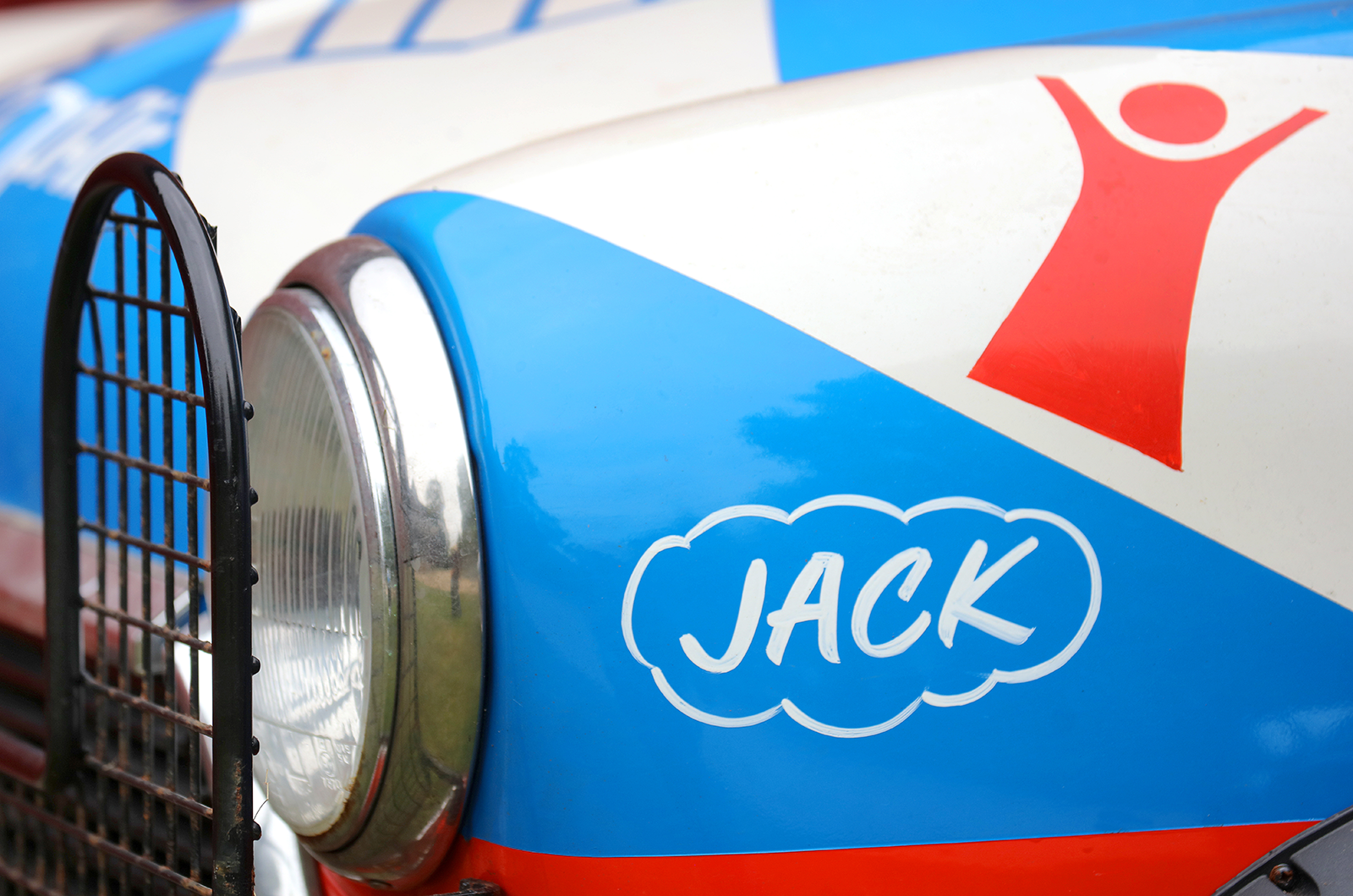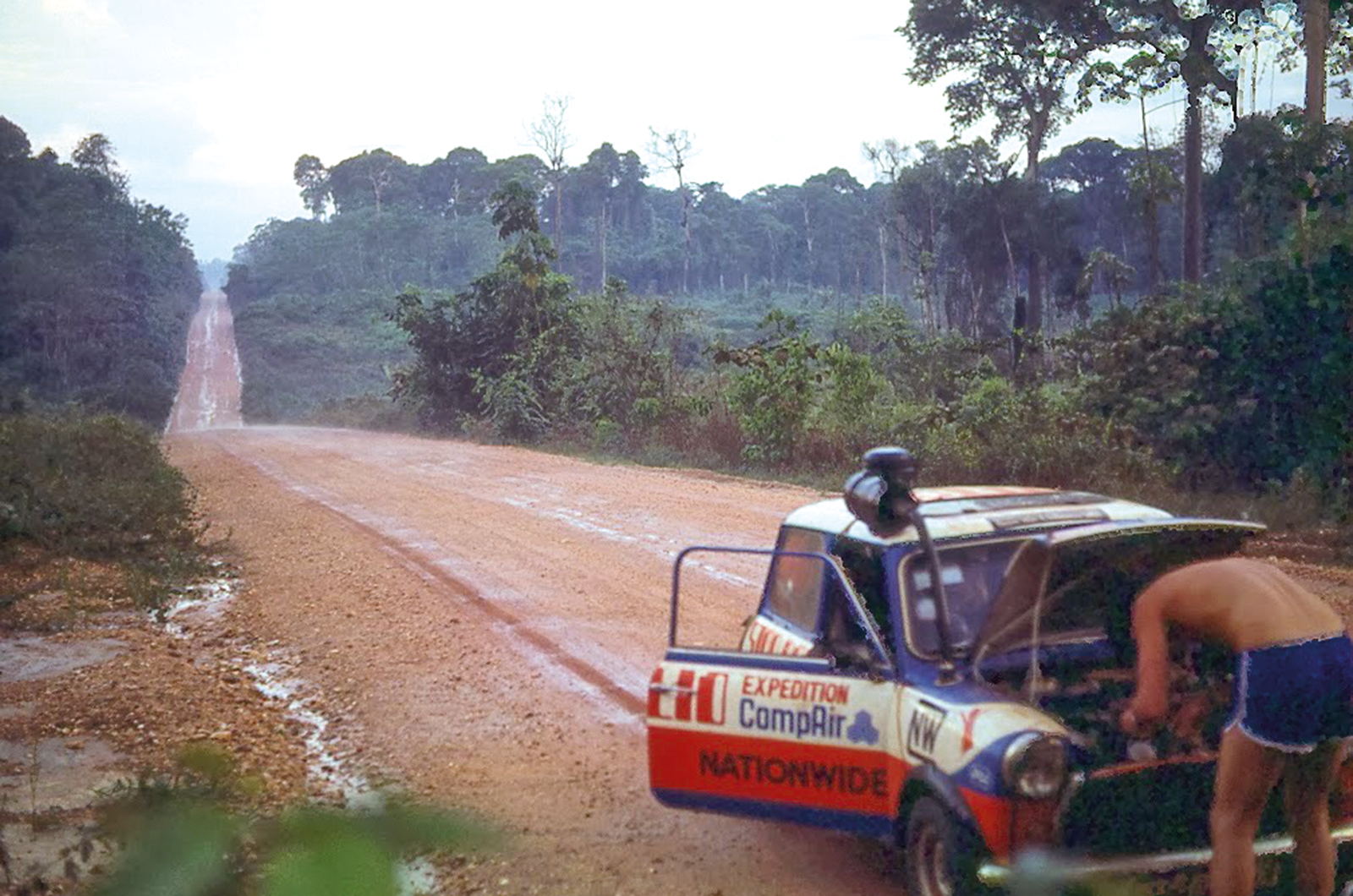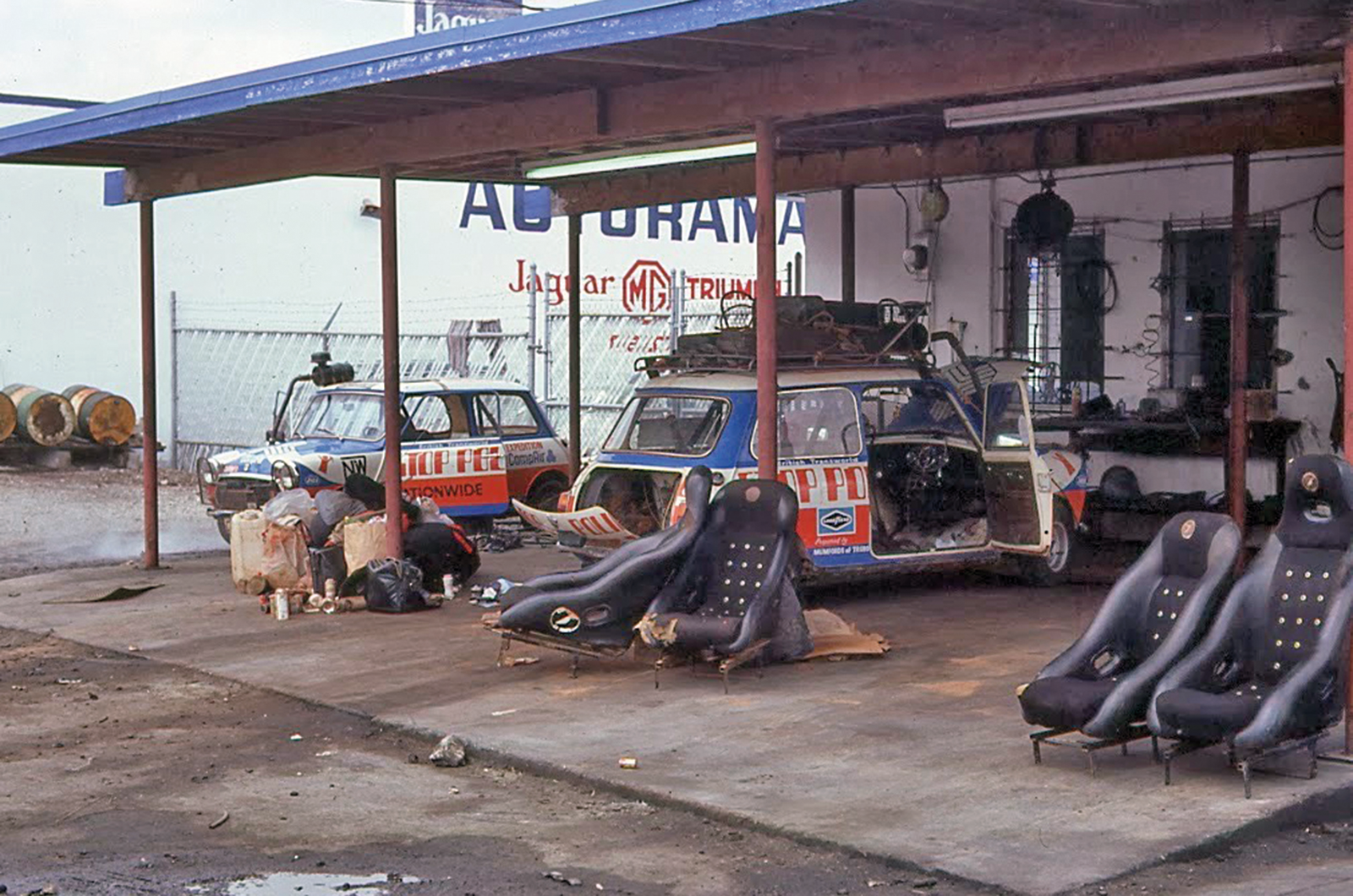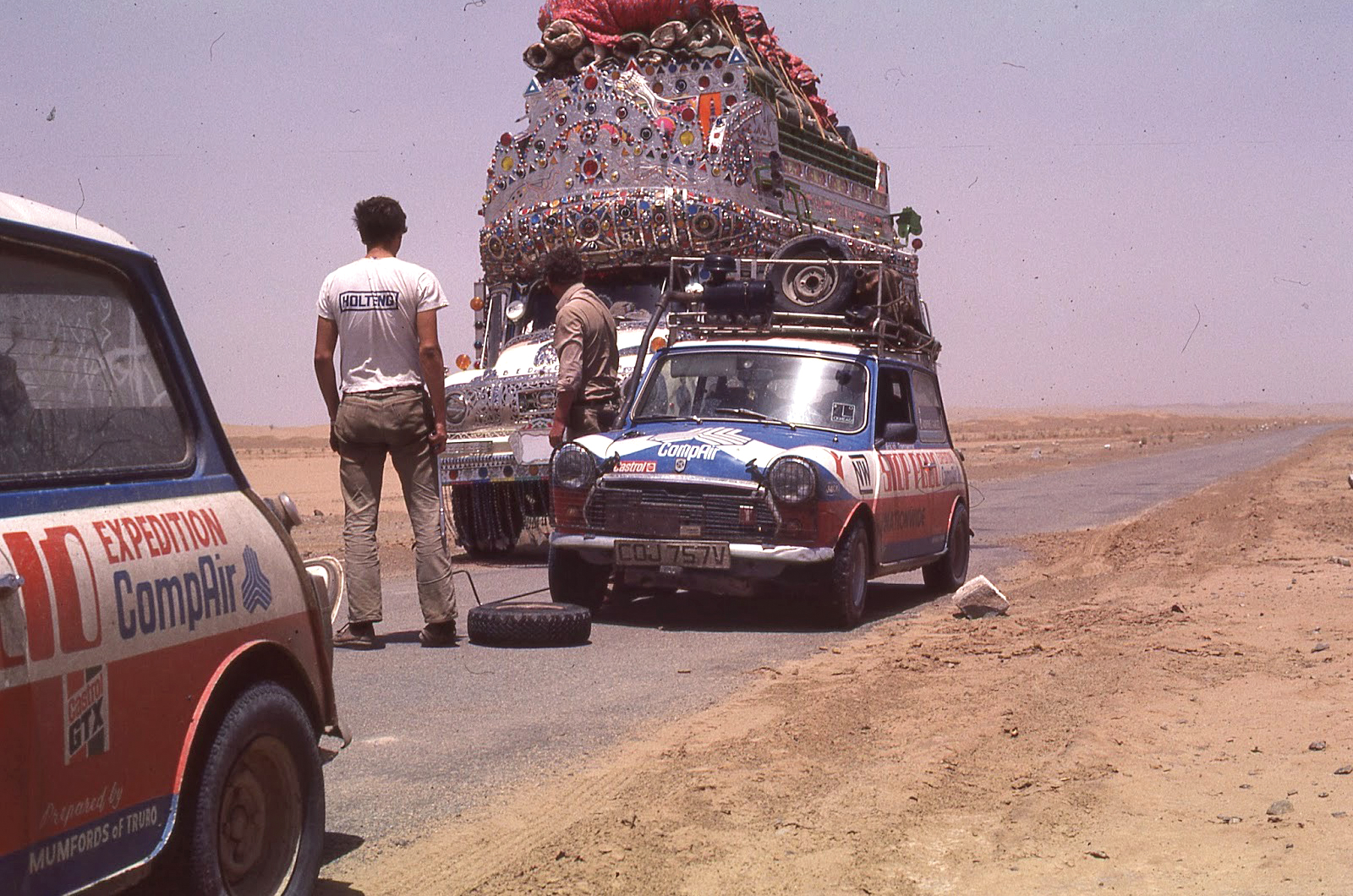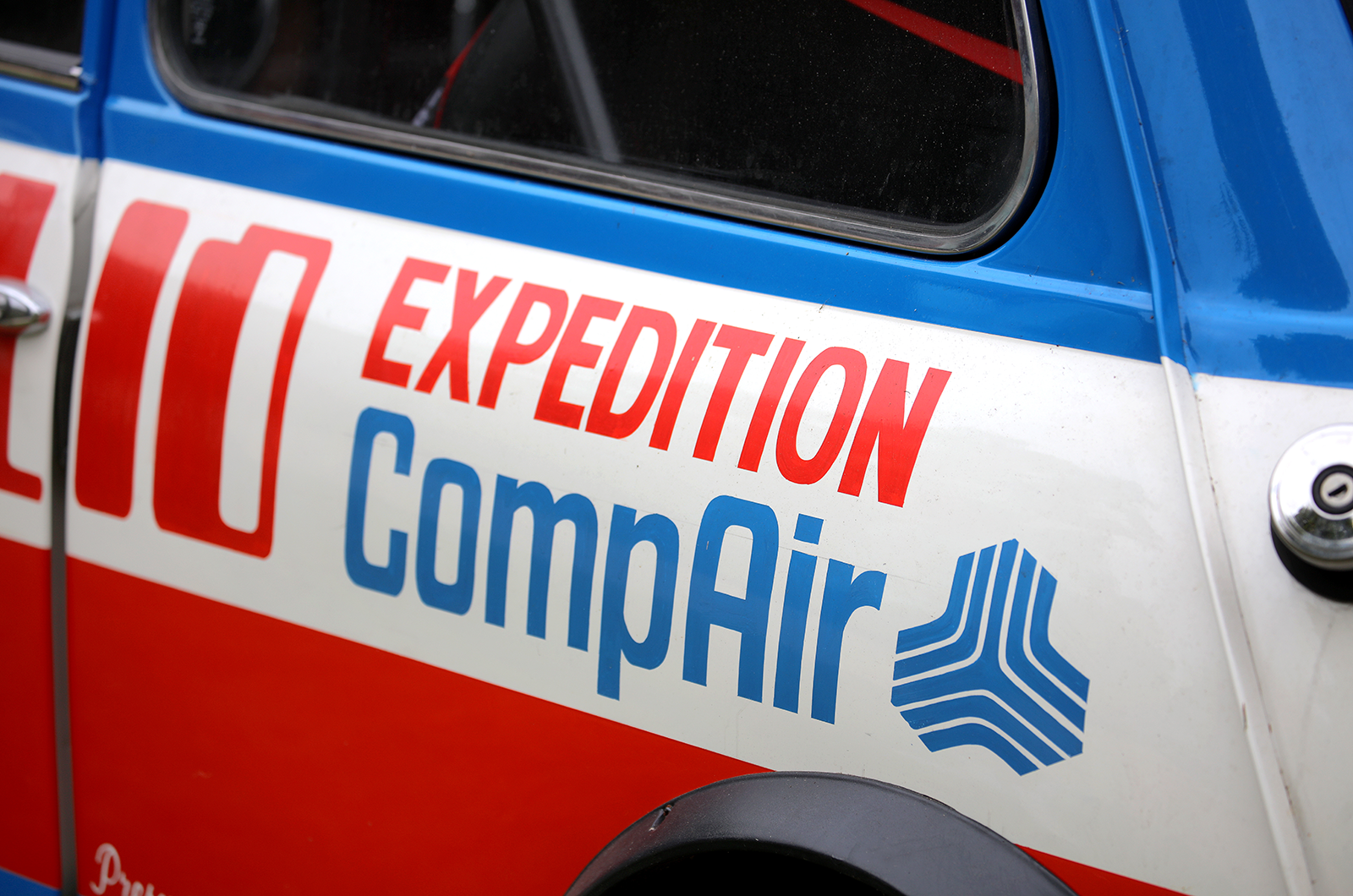“It was illegal to tow in Venezuela and we had to watch out for the police,” he says. “With no radios, hand signals were the only way to communicate.” Tired and dirty, the team was relieved to finally complete the brutal South American section.
The Minis attracted a lot of attention on their travels
From Caracas, the cars were shipped to Miami for the drive across the States to Los Angeles, from where they were transferred to Singapore.
There, the local British Leyland garage set about the task of preparing the Minis for the leg across Asia.
‘They had taken a terrible battering,’ wrote Clarke. ‘As well as new subframes, plus suspension and brake overhauls, the engines needed a total rebuild with reboring, new pistons, and a crankshaft regrind.
‘The petrol tanks had to be welded up, and we needed new windscreens, headlights and dials. The horn had been stolen in Brazil, and that had to be replaced. Not your average 3000-mile service.’
The Minis’ departure in February coincided with Chinese New Year but, despite the distracting local celebrations, the team was concerned that increasing troubles in Iran and Iraq would rule out access.
Ferris attends to the cars in India
By early March they were heading across Thailand, on a 2000-mile route to the capital Bangkok where they hoped to visit a nearby refugee camp and view more of Save the Children’s work.
The government granted permission, but nothing prepared them for the scale of the site with more than 36,000 Kampuchean refugees behind wire fences.
In stark contrast to the camp, the Mini team also visited some famous temples along the route to Penang.
‘The monks were fascinated by the cars and asked us about our trip,’ reported Clarke. ‘They gave us lucky charms to keep us safe on our travels.’
From Malaysia’s northwestern coast, the Minis were shipped across the Indian Ocean on a five-day voyage to Madras (now Chennai), where the biggest challenge was unloading the cars upon arrival.
The Transworld Minis, as found
While in India, Clarke and Ferris stopped to report on the impressive work Save the Children was doing to help struggling families.
‘There were no nursery groups, playgroups or child health centres,’ recalled Clarke. ‘Many of the children were living in builders’ yards, and it was unthinkable to see newborn babies being fed by mothers surrounded by rubble.
‘Save the Children had set up mobile crèches to help the suffering. My mind still goes back to those youngsters; I’ll never forget their smiles.’
The experience of travelling through India was a highlight of the adventure for Clarke, but it wasn’t without its complications.
‘From Madras we motored through the hot plains and by the time we reached the border with Pakistan at Amritsar, the temperature had cooled. But we still had to cope with swarms of flies that got everywhere –in our food, drinks and clothing.’
The two-year rebuild has had spectacular results
Compared to India, Pakistan seemed a far richer country.
‘We were only there seven days for the journey from Lahore to Quetta,’ wrote Clarke. ‘En route we really enjoyed the refreshing treats of juicy oranges and sweet ice cream, but the hurdle ahead of the Balochistan Desert filled me with dismay.
‘I’d lived in hope that we’d seen the last of sand and dirt roads, but as we came over the top of the purple-coloured Quetta mountains, all that lay ahead were dunes.
‘The journey through the desert to Tehran was more than 1500 miles and again the shovels were regularly used to dig out the Minis.’
The Minis were originally prepared by Leyland dealership Mumfords in Truro (left); Lenny Thackray was enlisted for the restoration
In comparison, the Iranian roads were excellent but the unstable situation with Iraq made progress tricky at times.
‘In remote areas the locals were very friendly, but every 100km we were stopped by armed patrols who searched us.
‘My knowledge of Persian was negligible and explaining our journey proved difficult. We were eventually taken off to an army detention centre where we were held while our passports and travel reasons were checked. This, thankfully, was the last dramatic adventure we experienced.’
After all the troubles of the previous months, the most memorable moment of the last long stretch was a snowball battle in the Turkish mountains before the seemingly endless drive across Europe to France.
In Calais, the team was greeted by Nationwide reporters for a final broadcast about the 13-month, 60,000-mile charity fundraising trip. The final total gathered for the Stop Polio campaign was £25,000.
The Minis’ rotten shells were blasted
The Minis made it back to Cornwall, where they remained in a compound at Mumfords in Truro, the garage that originally prepared them.
Ownership wasn’t clear and finally, in return for a donation to Stop Polio, the Minis became a popular exhibit at a local car museum.
When the museum closed, ‘Jack and Jill’ were transferred into storage but unfortunately the damp barn resulted in rapid deterioration of the historic pair.
At some point Jill’s engine and gearbox were removed but the rebuild was never finished, and the components were abandoned inside the cockpit.
Many of the original features including the twin petrol tanks and roof-racks were complete, but the cars required major restoration.
Every detail has been brought back to life
The owner had planned to restore Jack, the best preserved of the pair, but Mini enthusiasts were critical about the prospect of Jack and Jill being split up.
Various attempts to sell the cars failed to find a saviour, and in 2014 they first appeared for sale on eBay.
Finally, in 2017, the cars found a safe home.
“I’d just returned from a great day at the British Grand Prix and at 11:30pm, with a drink in hand, I ended up looking on eBay,” explains Valentine Lindsay.
“When I discovered the Transworld Minis, I couldn’t resist them. I’ve always been fascinated by great motoring adventures because my father tried to drive a Rolls-Royce Silver Ghost back from India. He’d also done the 1968 London-Sydney Marathon in a Bentley 8 Litre. I remembered the 1980s Nationwide reports about the Minis, and felt they had to be saved.”
Restored Jack (with original roof-rack) and Jill, complete with truck air-cleaners, stone guards and hand-painted livery
The condition of the cars when they arrived was shocking, but with no miles since the world tour they were original and complete.
“I enlisted Lenny Thackray for the restoration, with the aim of saving as much of the Minis as possible.”
In his Kent workshop, Thackray stripped both cars to bare shells before sand-blasting them.
All of the panels were saved, but with a full repaint required there was no option but to recreate the sponsorship livery. A new bootlid was fitted, so at least one panel could be retained with its original colours.
The interiors have been completely transformed
While the rebuild progressed, Lindsay set about researching the history of the expedition: “I had loved the story of a 19-year-old Cornish mechanic agreeing to become the second driver, and through the internet I tracked down Tim to his garage. He was really helpful and provided thousands of slides for reference.”
Thackray then enlisted a local signwriter to hand paint all the logos and wording on the restored shells, and the finished graphics look fantastic.
As the mechanical side was rebuilt, various unique details were discovered that Ferris later confirmed.
At the startt he cars ran with 998cc engines, but when new motors were fitted in Africa they were Marina-specification with bespoke oil filters.
All the special fitments including body guards, rollbars, lorry air filters and Jack’s original roof-rack were rebuilt.
1275cc engines were fitted in South Africa and transformed the cars
For the interior, Lindsay found a pair of Corbeau seats and fitted four-point safety harnesses for the planned demonstration runs, while the rough original chairs were saved and stored.
The final touch was a Blockheads band sticker, just as was given to the team by Dury back in 1980.
After a meticulous two-year restoration, the Stop Polio Minis made their debut at the 2019 London Classic Car Show where, chasing around the ExCel exhibition hall, they were a hugely popular feature of the live action.
Lindsay also invited Ferris up to see Jack and Jill. “I was over the moon when I saw them,” he says, “and finally sitting in the driving seat again brought back all the amazing memories. They’d done a fantastic restoration job – far better than new!”
The original livery was recreated by a gifted signwriter, and complemented by a set of reprinted sponsors’ stickers
Last year would have marked the 40th anniversary of the epic trip, but Lindsay’s plans were thwarted by pandemic lockdowns: “I’d love to have taken them to Goodwood with Tim.”
Inspired by the restoration, Ferris has started posting his expanded diary from the journey on Facebook, with a new report every Tuesday. “With no chance to travel, it seemed a good time to relive the trip 40 years on,” he explains.
“I’d moved on to other things [four sorties on the RAC Rally among them] but now realise it was a hell of a thing and am proud of the achievement.”
There’s now no stopping Ferris, as he plans a retirement adventure across South America in a 4x4 with wife Mary, to whom he’d just become engaged prior to the Mini world tour.
Images: James Mann
READ MORE
The Mercedes-Benz 300SL Gullwing smuggled out of Cuba
Buyer’s guide: Rover Mini
Driving Donald Healey’s Monte-winning Invicta Low Chassis
Mick Walsh
Mick Walsh is Classic & Sports Car’s International Editor

